#Order: Macroscelidea
Explore tagged Tumblr posts
Text
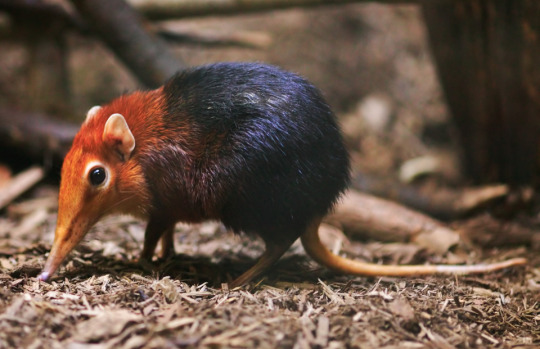

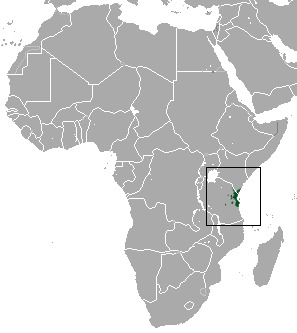
#poll#Class: Mammalia#Order: Macroscelidea#Family: Macroscelididae#Genus: Rhynchocyon#Rhynchocyon Petersi#Range: Afrotropical
46 notes
·
View notes
Text
Round 3 - Mammalia - Macroscelidea



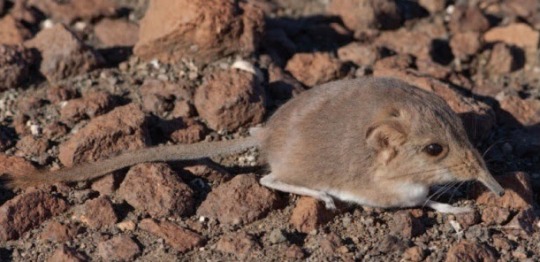
(Sources - 1, 2, 3, 4)
Our first group of placental mammals, as well as our first group belonging to a diverse clade of mammals known as “Afrotherians”, the order Macroscelidea are commonly called “elephant shrews”, “jumping shrews”, or “sengis.” Like many animals commonly called shrews, macroscelideans are not true shrews, and are closer related to elephants than they are to shrews! Macroscelidea includes one family, Macroscelididae, with 20 species in 6 genera.
Sengis are small, quadrupedal, and insectivorous. They have long, flexible snouts, which they use to search for food, with the length of the snout varying between species. They will then use their tongue to flick food into their mouth, much like an anteater. They eat mainly insects, spiders, centipedes, millipedes, and earthworms. Some species also feed on small amounts of plant matter, especially new leaves, seeds, and small fruits. They have long legs relative to their size, and scaly tails. They have large canine teeth, and also high-crowned cheek teeth similar to those of ungulates. They are mostly diurnal and very active, wary, well camouflaged, and adept at dashing away from threats. Several species make a series of cleared pathways through the undergrowth and spend their day patrolling them for insect life. If the animal is disturbed, the pathway provides an obstacle-free escape route. Sengis are uncommon, but widely distributed across Africa, mainly southern Africa.
Sengis are solitary, despite many species living in monogamous pairs. These pairs will only meet for mating, and not associate otherwise, living in separate nests. They share and defend their home territory, which is marked using their scent glands. Female sengis undergo a menstrual cycle similar to that of humans, making them one of the few nonprimate mammals to do so. The sengi mating period lasts for several days. After mating, the pair will return to their solitary habits. After a gestation period varying from 45 to 60 days, the female will bear a litter of one to three young. The young are born relatively well developed, and are able to run within a few hours. They remain in the nest for several days before venturing outside. After five days, the young's milk diet is supplemented with mashed insects, which are collected and transported in the cheek pouches of the female. The young then slowly start to explore their environment and hunt for insects. After about 15 days, the young will begin the migratory phase of their lives, and will eventually begin to establish their own territories. Females have litters several times a year.
Macroscelids are thought to have diverged from other afrotherians roughly 57.5 million years ago. The earliest definitive member was Chambia from the early-middle Eocene of Tunisia. Some early macroscelids, such as Myohyrax, were so similar to hyraxes that they were initially included with that group, while others, such as Mylomygale, were relatively rodent-like. These unusual forms all died out by the Pleistocene. The diversification of living macroscelids apparently began when the Rhynchocyon lineage split off about 33 Ma ago, in the early Oligocene.

Propaganda under the cut:
Sengis are one of the fastest small mammals, having been recorded to reach speeds of 28.8 kilometres per hour (17.9 mph).
Unlike most other sengis, Short-snouted Elephant Shrews (Elephantulus brachyrhynchus) utilize a network of safety burrows by digging their own burrows or stealing the pre-existing burrows of rodents.
The Cape Elephant Shrew (Elephantulus edwardii) feeds on both insects and the nectar of plants, covering its long nose in pollen. It is an important pollinator for the Pagoda Lily (Massonia bifolia), Hyobanche atropurpurea, and the Sulphur Sugarbush (Protea sulphurea).
The Somali Elephant Shrew (Galegeeska revoilii) was among the 25 "most wanted lost species” that were the focus of Global Wildlife Conservation's “Search for Lost Species” initiative. On 18 August 2020, 50 years after it was last seen and recorded, it was announced that a population had been found in Djibouti, the first documented since 1968.
Rufous Elephant Shrews (Galegeeska rufescens) are very meticulous about their foraging trails (see gif above). Throughout the trails are several spots for resting, scent-marking, and sunbathing. They maintain their trails by pushing aside leaf litter and other loose debris. The males usually spend most of their time cleaning the trails.
Young Rufous Elephant Shrews will climb on their parents��� backs and vigorously rub their four feet in the fur in a rapid vibrating motion. This allows them to transfer odors from scent glands on their feet to their parents, as well as pick up their parents’ scent. The mixture of the scents creates a family odor that can be used for recognizing family members.
The Etendeka Round-eared Sengi (Macroscelides micus) (image 4) is the smallest known sengi. It weighs less than one ounce (28 grams) and is 19 cm (7.3 inches) long, including the tail, when fully grown.
The Grey-faced Sengi (Rhynchocyon udzungwensis) is the largest known sengi, on average 56.4 cm (22.2 in) long, and weighing 711 g (1.6 lbs). This species was only recently discovered in January 2008.
#animal polls#round 3#mammalia#gonna just grit my teeth and bear it if anyone mentions Sing My Angel Of Music because if people only know these animals through memes#at least they know them
71 notes
·
View notes
Text
Nearly all the megafauna we associate with Africa today is immigrants. For the last 30 million years or so, its dominant mammalian families have been Bovidae (antelopes, gazelles, gnus, buffaloes), Giraffidae (giraffes), Hippopotamidae (hippos), Camelidae (dromedaries), Felidae (lions, leopards), Canidae (jackals, wild dogs), Hyaenidae (hyaenas), Rhinocerotidae (rhinos), Equidae (asses, zebras), Hystricidae (African porcupines)... nearly all came from outside. Mostly Asia; some from America! (The big exception is elephants).
For the first half of the age of Mammals, say 60 to 30 million years ago, Africa was an island-continent, cut off from the rest of the world by the warm currents of the Tethys Sea:

(Map by Chris Scotese; other pics from Wiki unless noted otherwise)
And, much like Australia in later times, it had developed its own unique fauna of endemic mammals, unknown in the rest of the world. It mostly formed a single clade, appropriately called Afrotheria, which had branched off other placentate mammals in the time of the last dinosaurs. And what were these Afrotheria?




Some of the smallest are still among us. Tenrecs and golden moles (order Afrosoricida), elephant shrews (order Macroscelidea), and hyraxes (order Hyracoidea), the African answer to hedgehogs, moles, shrews, and rabbits, respectively. They are not closely related to their Amero-Eurasian analogues, but they live in much the same way, and much in the same way they did when Africa was an island.

But some of them could grow quite large! Alas, Titanohyrax is known only from its jaws. Thankfully, the jaws and teeth of mammals are very distinctive and allow very precise identification.
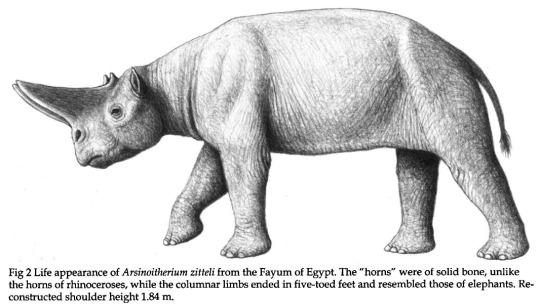
And as for the true giants? Behold magnificent Arsinoitherium (order Embrithopoda), which was a rhino before there were rhinos. No close relation -- in fact, its horns were hollow cones of bone, whereas those of rhinos are made of solid keratin, like giant fingernails. (Sketch by Mauricio Anton, from this wonderful paper by him and Alan Turner).

Then there were the early Sirenians, the still only semi-aquatic ancestors of dugongs and manatees (and the first who broke containment: the proto-manatees Pezosiren and Prorastomus ended up in Jamaica when Africa was still an island, and they still had legs!)

And of course there were early Proboscideans, the grandparents and granduncles of elephants, like Moeritherium, who roamed Egypt when it was still a tropical swamp...
But no isolation lasts forever. Around 40 million years ago, Africa had drifted close enough to Eurasia for some animals to cross through the Tethys. As the seafloor was crushed between continents, the smoking islands that would become Italy, Greece, Turkey, and Iran were rising in between.

Among the first to cross were Primates, such as Afrotarsius, a sort of midway between tarsiers and true monkeys. They did well in the jungles on both sides of the Tethys, spawning macaques, vervets, langurs, baboons and eventually, in the woodlands around Lake Victoria, the first apes.
Another such groups were Rodents -- specifically the Phiomorpha subgroup, in which we find all sorts of distinctly African species such as Old World porcupines, cane rats, and naked mole rats. This is to say that Primates and Rodents did well for themselves after sneaking in.
But then, 30 million years or so, Africa crashed into Eurasia. All barriers to migration went away (well, they came and went with the sea level, but the point is, Africa was no longer super-Australia anymore). And then what we think of today as "African fauna" rushed in.
Here is what African macrofauna looked like at that point, as ungulates and carnivorans were starting to show up:
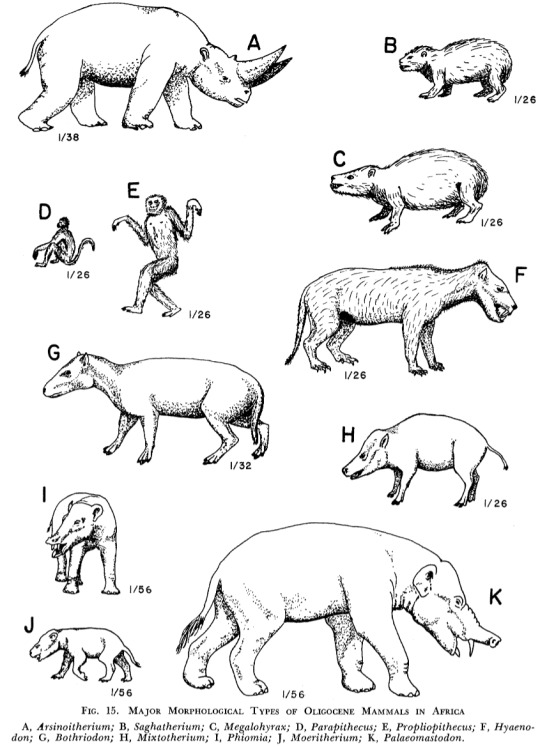
(H. B. S. Cooke, 1968)
The usual rule of thumb is that when two landmasses meet, the faunas of the smallest and/or most isolate landmass lose out. The later interchange between North and South America is a more famous example, but this is no exception.

The great Embrithopods vanished forever; other orders were relegated to small, humbler sizes. In came Bovidae, Giraffidae, Hippopotamidae, Rhinocerotidae, Felidae, Canidae, Hyaenidae, all sharpened by competition on a larger scale in the great grasslands of Eurasia. In came Equidae and Camelidae, which had appeared in North American plains alongside pronghorns (where did you think llamas come from?), and had gone all the way through Bering and Asia.
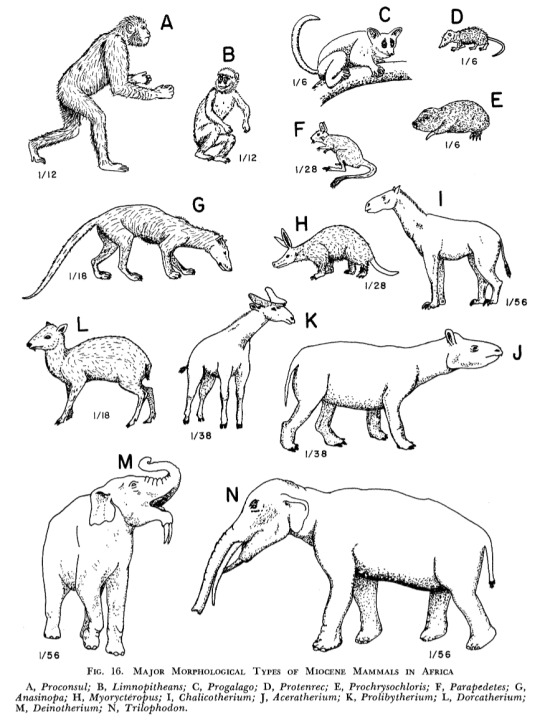
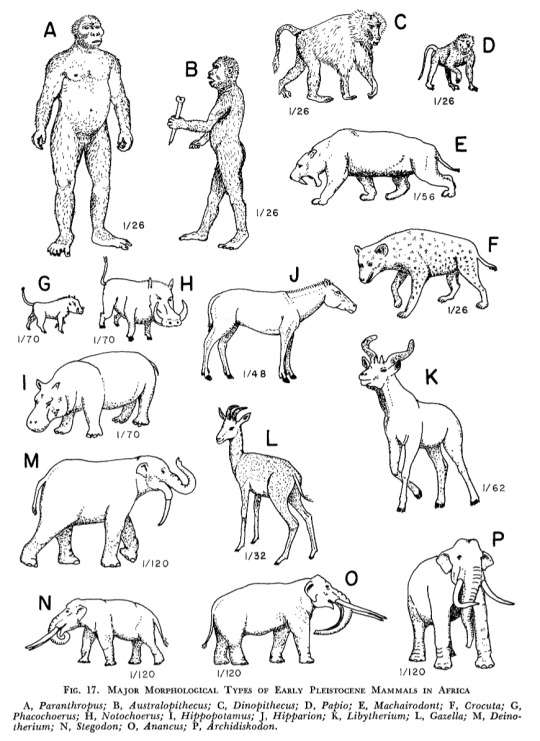
And by later ages, you see it yourselves: elephants and apes actually do quite well, but Eurasian carnivorans and ungulates now rule the land.
To be fair, many groups of pre-invasion African fauna did more than just endure. In the Miocene epoch, soon after the great exchange, apes would be found throughout Eurasia from Spain to China, and perhaps some key part of our own evolution took place there. Elephants were even more widespread, getting as far as South America; manatees invaded warm seawaters all around the Equator. Rock hyraxes and African porcupines had some success in the Near East and southern Europe. But I don't think any of these transformed the Eurasian landscape on the same scale as the African landscape was.
And to be sure, the newcomers were impressive!

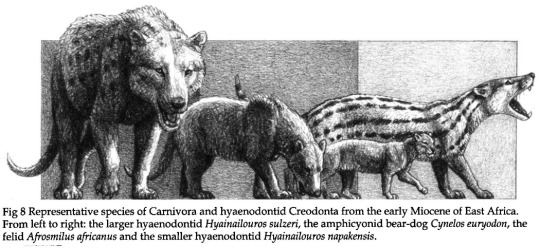
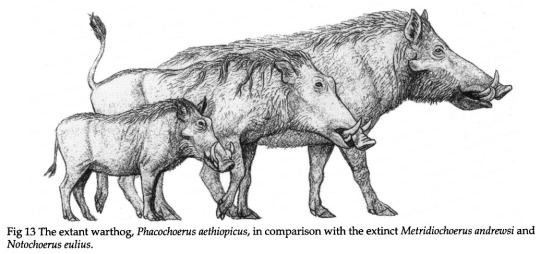
The wheel of ages turns and turns, caring little for who thrives and who falls -- but life as a whole, somehow, always falls on its feet.
28 notes
·
View notes
Text
The elephant shrew (or sengi) has the legs of a deer and the face of a worm-on-a-string. Its name comes from its long nose resembling that of an elephant, and it was later found that the shrew is, in fact, more closely related to elephants than any other species of shrew.
Image credit to Brookfield Zoo
Black and rufous elephant shrew

Not being a real shrew, the sengi was given its own order- macroscelidea. Other shrews are of the order eulipotyphla, shared with moles and hedgehogs. Eulipotyphla means “horribly fat and blind.”
The short-eared elephant shrew, located in South Africa, Botswana, and Namibia, is the smallest of 20 species. They weigh around 1.5 ounces, which is about the same as a slice of bread. Larger elephant shrews prefer forests and thickets while smaller species prefer savanna and open country covered in shrubs. Unfortunately they don’t have very long lives, reaching sexual maturity at 5 months old and then living to 1-2 years old.
Short-eared elephant shrew. Image credit to Zoo Leipzig

Elephant shrews eat termites, ants, berries, and plant shoots. They are the favorite snacks of many creatures including snakes, birds, and small cats like caracals and servals. To cope with this, they hardly ever go into the open. Smaller species that live in the savanna, which has lots of open space, do this by creating paths through the shrubbery and grass they live in. Using these paths, they work with their spouse (they live in pairs) to hunt for bugs that try to cross it.
Overall, I’d rate the elephant shrew 9/10. They’re only missing a point because of their short lifespans.
124 notes
·
View notes
Text
Elephant Shrew!
There are 20 species of elephant shrews and they are part of the order Macroscelidea
Other members of that order include the aardvark, dugongs, elephants and golden moles
Ironically they are more closely related to elephants than true shrews
True shrews are part of the order Eulipotyphla
They are also able to run at speeds of up to 28.8km/h
If you have read this far why not follow us for daily animal facts and pics!
-
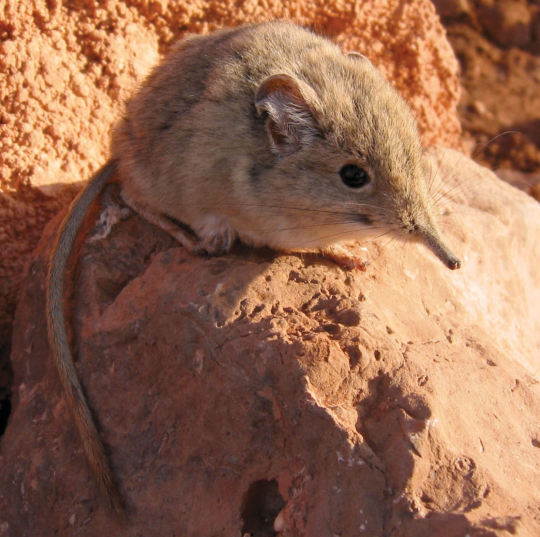
📷1: “Petrosaltator rozeti-Zootaxa.jpg” by Galen B. Rathbun on Wikimedia Commons (CC BY-SA 3.0)
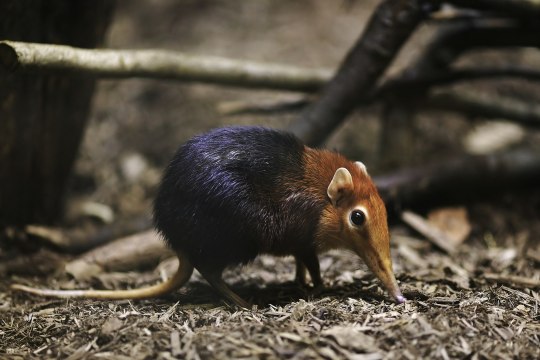
📷2: “Rhynchocyon petersi from side.jpg” by Joey Makalintal on Wikimedia Commons (CC BY 2.0)
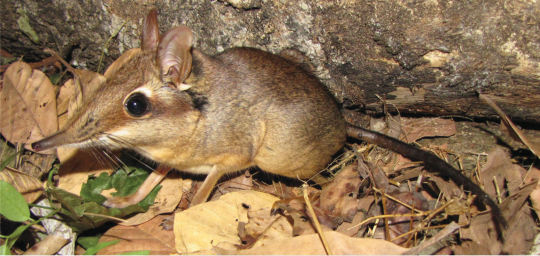
📷3: “Petrodromus tetradactylus-Zootaxa.jpg” by Galen B. Rathbun on Wikimedia Commons (CC BY-SA 3.0)
8 notes
·
View notes
Conversation
Best animals in each mammalian order
Rodentia: Naked mole rats (they're eusocial and cold-blooded, that's hardcore)
Chiroptera: Mouse-tailed bats (they got a tail!)
Soricomorpha: Cuban Solenodon (it's venomous and that's cool as hell)
Primates: Mandrills and geladas (they're Awful Hairy Men with fangs, i love that)
Carnivora: Spotted hyena (i LOVE THEM and their weird necks and legs)
Cetartiodactyla: Wild boar (i just think they're neat)
Diprodontia: Cuscuses (their FACES)
Lagomorpha: Hares (they're Big Creepy Rabbits)
Didelphimorpha: all of them except for the genus Thylamys
Dasyuromorphia: Tasmanian devils (yeah)
Afrosoricida: lowland streaked tenrec
Eulipotyphla: It turns out cuban solenodons are in THIS order and not soricomorpha so im changing the soricomorpha one to the water shrew
Cingulata: how can it not be Glyptodon?
Peramelemorphia: Bandicoots. Crash is my friend.
Scandentia: every animal in this order looks the SAME
Perissodactyla: Tapir.
Macroscelidea: i'm honestly tired of these shrew-looking things at this point but the Take A Closer Look At That Snout boy gets a pass
Pilosa: silky anteaters, they look like bad taxidermy
Monotremata: Echidna, knuckles is my friend
Proboscidea: Rhynchotherium
3 notes
·
View notes
Photo

One of the first two baby sengis (family Macroscelididae, in the order Macroscelidea), or round eared elephant shrews, born at Chester Zoo this summer makes its public debuts on 16 November. The tiny creatures, native to Botswana, Namibia and South Africa, are more closely related to elephants than shrews and are among the few mammals that naturally pair up for life. Photograph: Chester Zoo/PA.
52 notes
·
View notes
Text
More on Mole-Mice Population
Applies to these following universes: Anthro-Animal, Candy Land, Mermaid. and Sandal.
Being as these versions of the real life small mammals are both sapient and bipedal, necessary adjustments can be made - including adjusting body proportions and size. All have human-like arms and legs, with opposable thumbs and plantigrade feet.
We are not including any animals that are aquatic, spiny, or smelly.
~~~~~
From the Rodentia order are the following: most species from the Muroidea superfamily (including mice, gerbils, hamsters, rats, lemmings, and voles), and the dormouse of the Gliridae family.
From the Eulipotyphla order are the following: the shrews and mole shrews from the Soricidae family, as well as the moles and shrew moles from the Talpidae family.
From the Primate order are the mouse lemurs.
From the Afrosoricida order are the following: the large-eared tenrecs, the shrew tenrecs, and the rice tenrecs from the Tenrecidae family; and the golden moles from the Chrysochloridea family.
From the Macroscelidea order, which is a sister to the Afrosoricida order, are the elephant shrews.
From the Scandentia order are the tree shrews.
MARSUPIALS
From the Didelphimorphia order are the following: the mouse opossums from the Marmosa genus and the Tlacuatzin genus, the Kalinowski's mouse opossum from the Hyladelphys genus, the gracile opossums from the Gracilinanus genus and the Cryptonanus genus, the Chacoan pygmy opossum from the Chacodelphys genus, the Patagonian opossum from the Lestodelphys genus, the slender opossums from the Marmosops genus, and the short-tailed opossums from the Monodelphis genus.
From the Dasyuromorphia order are the following: the little red kaluta from the Dasykaluta genus, the dibbler from the Parantechinus genus, the marsupial shrews from the Phascolosorex genus, the antechinus from the Antechinus genus, the false antechinus from the Pseudantechinus genus, the phascogale from the Phascogale genus, the ningaui from the Ningaui genus, the dunnart from the Sminthopsis genus, and the planigale from the Planigale genus.
From the Diprotodontia order are the following: the pygmy possums from the Burramys genus and the Cercartetus genus, the honey possums of the Tarsipes genus, and the feather-tailed possum of the Distoechurus genus.
From the Paucituberculata order are the shrew opossums.
From the Microbiotheria order are the monito del monte.
~~~~~
Tangentially related, the bumblebee bat (Bats are sapient but not quite anthro in Anthro-Animal Universe.) is also quite small.
Then, from the birds, the hummingbirds are very small - and the colourful passerines are relatively small.
1 note
·
View note
Text
Ellie the Elephant Shrew
Meet Ellie, The Elephant Shrew
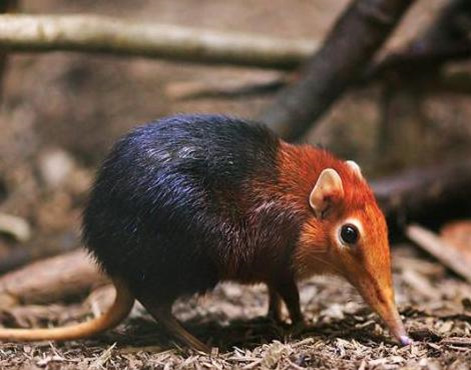
Scientific name- Elephantulus
Kingdom: She is from Kingdom Animalia
Phylum: Chordata
Class: She graduated from the class Mammalia
Order: Macroscelidea
Family: Her families name is Macroscelididae
Genus: Elephantulus
common name- Elephant Shrew
nutritional requirement- Ellie is an omnivore. She likes to eat lots of insects and grubs.
growth and development- Ellie was born in a litter of two and she was born after a period of gestation. She left the nest after a few days because she was so well developed.
behavior- She is very active during the day. She loves scavenging for food during the day as well. Ellie is also very well camouflaged and she will play hard to get and hide all over the place. She is good at camouflaging because she has many predators after her.
Reproduction- Generally, Ellie mates for a couple of days and when she is pregnant she will be for 45-60 days.
evolutionary origins- One of her closest relatives is the tree shrew and originated from East Africa.
habitat- Ellie has multiple houses in the forests, woodlands, and grasslands.
Special Skills:
She can jump over three feet when running
She can run at 18 mph
She also has a warning call when a predator approaches. She usually thumps her tail or foot.
https://a-z-animals.com/animals/elephant-shrew/
http://animals.net/elephant-shrew/
0 notes
Text




#poll#Class: Mammalia#Order: Macroscelidea#Family: Macroscelididae#Range: Afrotropical#Range: Palearctic
26 notes
·
View notes
Text
🦅 Reptilia Round-up and Mini Stat Post 🦅
This is a round-up of the points earned so far!
Having observed voter turn-out for this round, I am placing the cut-off point at 900. Meaning that any order which earned (or earns) over 900 points will be moving on to Round 4!
We still have a ways for go til the end of Round 3, but here’s how everyone stacks up so far:
1. Passeriformes (“passerines”) ~ 3035
2. Accipitriformes (“hawks”, “eagles”, “vultures”, and kin) ~ 2884
3. Carnivora (feliforms and caniforms) ~ 1678
4. Rodentia ~ 1675
5. Artiodactyla (“even-toed ungulates”) ~ 1320
6. Squamata (“Lizards”) ~ 1207
7. Charadriiformes (“shorebirds”) ~ 1195
8. Psittaciformes (“parrots”) ~ 1102
9. Columbiformes (“pigeons” and “doves”) ~ 1,088
10. Crocodylia (“crocodilians”) ~ 1060
11. Strigiformes (“owls”) ~ 1043
12. Cuculiformes (“cuckoos”) ~ 1,027
13. Orectolobiformes (“carpet sharks”) ~ 989
14. Falconiformes (“falcons”) ~ 961
15. Pilosa (“sloths” and “anteaters”) ~ 940
16. Galliformes (“landfowl”) ~ 897
17. Testudines (“Turtles”) ~ 883
18. Lagomorpha (“rabbits” and “pikas”) ~ 867
19. Suliformes (suliform waterbirds) ~ 858
20. Piciformes (“woodpeckers”, “toucans”, “barbets”, and kin) ~ 858
21. Sphenisciformes (“penguins”) ~ 841
22. Apterygiformes (“kiwis”) ~ 837
23. Lamniformes (“mackerel sharks”) ~ 835
24. Chiroptera (“bats”) ~ 825
25. Myliobatiformes (“stingrays”) ~ 813
26. Pelecaniformes (“pelicans”, “herons”, “ibises”, “Shoebill”, and kin) ~ 810
27. Monotremata (“platypus” and “echidnas”) ~ 794
28. Apodiformes (“hummingbirds” and “swifts”) ~ 794
29. Anseriformes (“waterfowl”) ~ 761
30. Carcharhiniformes (“ground sharks”) ~ 758
31. Pholidota (“pangolins”) ~ 734
32. Coraciiformes (“rollers”, “kingfishers”, “bee-eaters”, and kin) ~ 719
33. Gaviiformes (“loons/divers”) ~ 714
34. Sirenia (“sea cows”) ~ 704
35. Didelphimorphia (“opossums”) ~ 696
36. Gruiformes (“cranes”, “rails”, “flufftails”, and kin) ~ 680
37. Caprimulgiformes (“nightjars”) ~ 676
38. Eulipotyphla (“moles”, “shrews”, “hedgehogs”, and kin) ~ 674
39. Procellariiformes (“petrels” and “albatrosses”) ~ 673
40. Dasyuromorphia (“carnivorous marsupials”) ~ 669
41. Rhynchocephalia (“Tuatara”) ~ 665
42. Perissodactyla (“odd-toed ungulates”) ~ 654
43. Casuariiformes (“cassowaries” and “Emu”) ~ 647
44. Primates ~ 642
45. Nyctibiiformes (“potoos”) ~ 627
46. Bucerotiformes (“hornbills” and “hoopoes”) ~ 619
47. Opisthocomiformes (“Hoatzin”) ~ 594
48. Cingulata (“armadillos”) ~ 578
49. Diprotodontia (all the other marsupials) ~ 576
50. Phoenicopteriformes (“flamingos”) ~ 569
51. Squatiniformes (“angel sharks”) ~ 568
52. Squaliformes (“sleeper sharks”, “dogfish”, “lantern sharks”, and kin) ~ 567
53. Rhinopristiformes (“guitarfish”, “wedgefish”, “sawfish”, and kin) ~ 561
54. Tubulidentata (“Aardvark”) ~ 557
55. Proboscidea (“elephants”) ~ 554
56. Podicipediformes (“grebes”) ~ 540
57. Heterodontiformes (“bullhead sharks”) ~ 524
58. Podargiformes (“frogmouths”) ~ 508
59. Ciconiiformes (“storks”) ~ 507
60. Trogoniformes (“trogons”) ~ 497
61. Chimaeriformes (“chimaeras”) ~ 478
62. Hexanchiformes (“cow sharks” and “frilled sharks”) ~ 475
63. Eurypygiformes (“Kagu” and “Sunbittern”) ~ 464
64. Steatornithiformes (“Oilbird”) ~ 452
65. Rajiformes (“skates”) ~ 437
66. Macroscelidea (“elephant shrews”) ~ 422
67. Aegotheliformes (“owlet-nightjars”) ~ 418
68. Afrosoricida (“otter shrews”, “tenrecs”, and “golden moles”) ~ 394
69. Leptosomiformes (“Cuckoo-roller”) ~ 394
70. Struthioniformes (“ostriches”) ~ 388
71. Cariamiformes (“seriemas”) ~ 385
72. Phaethontiformes (“tropicbirds”) ~ 383
73. Pterocliformes (“sandgrouses”) ~ 381
74. Peramelemorphia (“bandicoots” and “bilbies”) ~ 379
75. Tinamiformes (“tinamous”) ~ 373
76. Musophagiformes (“turacos”) ~ 373
77. Dermoptera (“colugos”) ~ 349
78. Pristiophoriformes (“saw sharks”) ~ 335
79. Rheiformes (“rheas”) ~ 331
80. Microbiotheria (“Monito del Monte”) ~ 327
81. Otidiformes (“bustards”) ~ 321
82. Mesitornithiformes (“mesites”) ~ 303
83. Hyracoidea (“hyraxes”) ~ 285
84. Coliiformes (“mousebirds”) ~ 281
85. Scandentia (“treeshrews”) ~ 277
86. Torpediniformes (“electric rays”) ~ 268
87. Paucituberculata (“shrew opossums”) ~ 253
88. Notoryctemorphia (“marsupial moles”) ~ 208
1️⃣ Ranks of single species so far 1️⃣
1. Tuatara (Sphenodon punctatus) ~ 665
2. Hoatzin (Opisthocomus hoazin) ~ 594
3. Aardvark (Orycteropus afer) ~ 557
4. Oilbird (Steatornis caripensis) ~ 452
5. Cuckoo-roller (Leptosomus discolor) ~ 394
6. Monito del Monte (Dromiciops gliroides) ~ 327
7. Limnognathia maerski ~ 124 (Note: a new species has since been described in this phylum but as Round 1 happened before the paper it wasn’t included in Round 1)
Extra Stats:
✔️ Most Votes so far ⬆️
Reptilian Order Accipitriformes (“hawks”, “eagles”, “vultures”, and kin) ~ 797
Reptilian Order Passeriformes (“passerines”) ~ 755
Mammalian Order Rodentia (rodents) ~ 492
Mammalian Order Artiodactyla (“even-toed ungulates”) ~ 376
Mammalian Order Carnivora (feliforms and caniforms) ~ 368
✔️Least Votes so far ⬇️
Chondrichthyan Order Torpediniformes (“electric rays”) ~ 140
Chondrichthyan Order Pristiophoriformes (“saw sharks”) ~ 163
Mammalian Order Notoryctemorphia (“marsupial moles”) ~ 169
Reptilian Order Musophagiformes (“turacos”) ~ 171
Reptilian Order Otidiformes (“bustards”) ~ 173
🥰 Most Favorites so far ⬆️
Reptilian Order Passeriformes (“passerines”) ~ 452
Reptilian Order Accipitriformes (“hawks”, “eagles”, “vultures”, and kin) ~ 321
Mammalian Order Carnivora (feliforms and caniforms) ~ 301
Mammalian Order Rodentia (rodents) ~ 183
Mammalian Order Artiodactyla (“even-toed ungulates”) ~ 165
😑 Least Favorites so far ⬇️
Mammalian Order Notoryctemorphia (“marsupial moles”) ~ 5
Mammalian Order Paucituberculata (“shrew opossums”) ~ 6
Chondrichthyan Order Torpediniformes (“electric rays”) ~ 7
Reptilian Order Leptosomiformes (“Cuckoo-roller”) ~ 8
Mammalian Order Hyracoidea (“hyraxes”) ~ 9
Reptilian Order Otidiformes (“bustards”) ~ 9
❤️ Most Loves so far ⬆️
Reptilian Order Accipitriformes (“hawks”, “eagles”, “vultures”, and kin) ~ 403
Reptilian Order Passeriformes (“passerines”) ~ 243
Mammalian Order Rodentia (rodents) ~ 233
Reptilian Order Cuculiformes (“cuckoos”) ~ 182
Reptilian Order Crocodylia (“crocodilians”) ~ 166
💔 Least Loves so far ⬇️
Mammalian Order Notoryctemorphia (“marsupial moles”) ~ 37
Mammalian Order Paucituberculata (“shrew opossums”) ~ 46
Mammalian Order Scandentia (“treeshrews”) ~ 46
Mammalian Order Hyracoidea (“hyraxes”) ~ 53
Mammalian Order Microbiotheria (“Monito del Monte”) ~ 54
👍 Most Likes so far ⬆️
Reptilian Order Leptosomiformes (“Cuckoo-roller”) ~ 116
Reptilian Order Struthioniformes (“ostriches”) ~ 109
Reptilian Order Rheiformes (“rheas”) ~ 96
Mammalian Order Microbiotheria (“Monito del Monte”) ~ 92
Reptilian Order Tinamiformes (“tinamous”) ~ 92
✋ Least Likes so far ⬇️
Mammalian Order Carnivora (feliforms and caniforms) ~ 7
Reptilian Order Apodiformes (“hummingbirds” and “swifts”) ~ 25
Reptilian Order Strigiformes (“owls”) ~ 27
Reptilian Order Caprimulgiformes (“nightjars”) ~ 32
Mammalian Order Chiroptera (“bats”) ~ 34
😐 Most Neutral votes so far ⬆️
Mammalian Order Notoryctemorphia (“marsupial moles”) ~ 51
Mammalian Order Paucituberculata (“shrew opossums”) ~ 50
Mammalian Order Scandentia (“treeshrews”) ~ 37
Mammalian Order Hyracoidea (“hyraxes”) ~ 33
Mammalian Order Primates ~ 29
😮 Least Neutral votes so far ��️
Reptilian Order Galliformes (“landfowl”) ~ 0
Reptilian Order Strigiformes (“owls”) ~ 0
Reptilian Order Charadriiformes (“shorebirds”) ~ 1
Reptilian Order Apodiformes (“hummingbirds” and “swifts”) ~ 1
Reptilian Order Accipitriformes (“hawks”, “eagles”, “vultures”, and kin) ~ 1
👎 Most Dislikes so far ⬆️
Mammalian Order Primates ~ 12
Reptilian Order Nyctibiiformes (“potoos”) ~ 6
Mammalian Order Hyracoidea (“hyraxes”) ~ 3
Reptilian Order Passeriformes (“passerines”) ~ 3
📪 Most Reblogs so far ⬆️
Reptilian Order Passeriformes (“passerines”) ~ 131
Reptilian Order Accipitriformes (“hawks”, “eagles”, “vultures”, and kin) ~ 126
Reptilian Order Cuculiformes (“cuckoos”) ~ 88
Mammalian Order Rodentia (rodents) ~ 82
Reptilian Order Columbiformes (“pigeons” and “doves”) ~ 77
📪 Least Reblogs so far ⬇️
Reptilian Order Tinamiformes (“tinamous”) ~ 13
Reptilian Order Cariamiformes (“seriemas”) ~ 13
Mammalian Order Notoryctemorphia (“marsupial moles”) ~ 15
Chondrichthyan Order Pristiophoriformes (“saw sharks”) ~ 16
Reptilian Order Rheiformes (“rheas”) ~ 16
📝 Most Notes so far ⬆️
Reptilian Order Accipitriformes (“hawks”, “eagles”, “vultures”, and kin) ~ 344
Reptilian Order Passeriformes (“passerines”) ~ 317
Reptilian Order Cuculiformes (“cuckoos”) ~ 197
Mammalian Order Rodentia (rodents) ~ 180
Reptilian Order Charadriiformes (“shorebirds”) ~ 180
📝 Least Notes so far ⬇️
Reptilian Order Tinamiformes (“tinamous”) ~ 39
Reptilian Order Rheiformes (“rheas”) ~ 39
Mammalian Order Scandentia (“treeshrews”) ~ 42
Chondrichthyan Order Pristiophoriformes (“saw sharks”) ~ 43
Reptilian Order Otidiformes (“bustards”) ~ 43
Tomorrow we begin with Round 2’s fourth most popular Class: Cephalopoda, the only mollusc class to make it to Round 3. Can any of them make it to Round 4? Let’s find out!
Since Cephalopoda is relatively small of a class, and Lissamphibia has even less orders, it will be immediately followed by Lissamphibia with no break in between. Two slimy classes, back to back!
#I wanted to put the cut-off at 1000 but I couldn’t do that to the sharks after they won Round 2#but listen#y’all gotta hold on for you favs#I can’t keep doing this lol#But now that we have a cutoff point know that 900 is the goal if we want any other classes represented in Round 4!#statistics#extras
35 notes
·
View notes
Text
🐙 Cephalopoda and Lissamphibia: Round-up and Stat Post 🐸
This is a round-up of the points earned so far!
As a reminder, any order to receive over 900 points will be moving on to the next round. This last round has given us quite a few more winning orders, and shuffled some of the stats (below the cut) as well. But unfortunately, none of the Lissamphibia orders made it through to Round 4. 😔 Hopefully, some of our next classes will fare better.
We still have a ways for go til the end of Round 3, but here’s how everyone stacks up so far:
🐦⬛ 1. Passeriformes (“passerines”) ~ 3035
🐙 2. Octopoda (“octopuses”) ~ 3015
🦅 3. Accipitriformes (“hawks”, “eagles”, “vultures”, and kin) ~ 2884
🐕 4. Carnivora (feliforms and caniforms) ~ 1678
🐀 5. Rodentia ~ 1675
🐙 6. Vampyromorphida (“Vampire Squid”) ~ 1494
🦑 7. Myopsida (myopsid squids) ~ 1337
🦌 8. Artiodactyla (“even-toed ungulates”) ~ 1320
🦎 9. Squamata (“Lizards”) ~ 1207
🏝️ 10. Charadriiformes (“shorebirds”) ~ 1195
🦑 11. Bathyteuthida (“deepsea squids”) ~ 1110
🦜 12. Psittaciformes (“parrots”) ~ 1102
🕊️ 13. Columbiformes (“pigeons” and “doves”) ~ 1,088
🌀 14. Nautilida (“nautiluses”) ~ 1072
🐊 15. Crocodylia (“crocodilians”) ~ 1060
🦉 16. Strigiformes (“owls”) ~ 1043
🕰️ 17. Cuculiformes (“cuckoos”) ~ 1,027
🦈 18. Orectolobiformes (“carpet sharks”) ~ 989
🦑 19. Sepiida (“cuttlefish”) ~ 963
🪽 20. Falconiformes (“falcons”) ~ 961
🦥 21. Pilosa (“sloths” and “anteaters”) ~ 940
22. Galliformes (“landfowl”) ~ 897
23. Testudines (“Turtles”) ~ 883
24. Anura (“frogs”) ~ 880
25. Lagomorpha (“rabbits” and “pikas”) ~ 867
26. Suliformes (suliform waterbirds) ~ 858
27. Piciformes (“woodpeckers”, “toucans”, “barbets”, and kin) ~ 858
28. Sphenisciformes (“penguins”) ~ 841
29. Apterygiformes (“kiwis”) ~ 837
30. Lamniformes (“mackerel sharks”) ~ 835
31. Urodela (“salamanders”) ~ 829
32. Chiroptera (“bats”) ~ 825
33. Myliobatiformes (“stingrays”) ~ 813
34. Pelecaniformes (“pelicans”, “herons”, “ibises”, “Shoebill”, and kin) ~ 810
35. Monotremata (“platypus” and “echidnas”) ~ 794
36. Apodiformes (“hummingbirds” and “swifts”) ~ 794
37. Anseriformes (“waterfowl”) ~ 761
38. Carcharhiniformes (“ground sharks”) ~ 758
39. Pholidota (“pangolins”) ~ 734
40. Coraciiformes (“rollers”, “kingfishers”, “bee-eaters”, and kin) ~ 719
41. Gaviiformes (“loons/divers”) ~ 714
42. Sirenia (“sea cows”) ~ 704
43. Oegopsida (oegopsid squids) ~ 698
44. Didelphimorphia (“opossums”) ~ 696
45. Gruiformes (“cranes”, “rails”, “flufftails”, and kin) ~ 680
46. Caprimulgiformes (“nightjars”) ~ 676
47. Eulipotyphla (“moles”, “shrews”, “hedgehogs”, and kin) ~ 674
48. Procellariiformes (“petrels” and “albatrosses”) ~ 673
49. Dasyuromorphia (“carnivorous marsupials”) ~ 669
50. Rhynchocephalia (“Tuatara”) ~ 665
51. Perissodactyla (“odd-toed ungulates”) ~ 654
52. Casuariiformes (“cassowaries” and “Emu”) ~ 647
53. Primates ~ 642
54. Nyctibiiformes (“potoos”) ~ 627
55. Bucerotiformes (“hornbills” and “hoopoes”) ~ 619
56. Opisthocomiformes (“Hoatzin”) ~ 594
57. Sepiolida (“bobtail squids”) ~ 583
58. Cingulata (“armadillos”) ~ 578
59. Diprotodontia (all the other marsupials) ~ 576
60. Phoenicopteriformes (“flamingos”) ~ 569
61. Squatiniformes (“angel sharks”) ~ 568
62. Squaliformes (“sleeper sharks”, “dogfish”, “lantern sharks”, and kin) ~ 567
63. Rhinopristiformes (“guitarfish”, “wedgefish”, “sawfish”, and kin) ~ 561
64. Tubulidentata (“Aardvark”) ~ 557
65. Proboscidea (“elephants”) ~ 554
66. Podicipediformes (“grebes”) ~ 540
67. Heterodontiformes (“bullhead sharks”) ~ 524
68. Podargiformes (“frogmouths”) ~ 508
69. Ciconiiformes (“storks”) ~ 507
70. Trogoniformes (“trogons”) ~ 497
71. Chimaeriformes (“chimaeras”) ~ 478
72. Hexanchiformes (“cow sharks” and “frilled sharks”) ~ 475
73. Idiosepida (“pygmy squids”) ~ 471
74. Eurypygiformes (“Kagu” and “Sunbittern”) ~ 464
75. Steatornithiformes (“Oilbird”) ~ 452
76. Spirulida (“Ram’s Horn Squid”) ~ 446
77. Rajiformes (“skates”) ~ 437
78. Macroscelidea (“elephant shrews”) ~ 422
79. Aegotheliformes (“owlet-nightjars”) ~ 418
80. Afrosoricida (“otter shrews”, “tenrecs”, and “golden moles”) ~ 394
81. Leptosomiformes (“Cuckoo-roller”) ~ 394
82. Struthioniformes (“ostriches”) ~ 388
83. Cariamiformes (“seriemas”) ~ 385
84. Phaethontiformes (“tropicbirds”) ~ 383
85. Pterocliformes (“sandgrouses”) ~ 381
86. Peramelemorphia (“bandicoots” and “bilbies”) ~ 379
87. Tinamiformes (“tinamous”) ~ 373
88. Musophagiformes (“turacos”) ~ 373
89. Gymnophiona (“caecilians”) ~ 372
90. Dermoptera (“colugos”) ~ 349
91. Pristiophoriformes (“saw sharks”) ~ 335
92. Rheiformes (“rheas”) ~ 331
93. Microbiotheria (“Monito del Monte”) ~ 327
94. Otidiformes (“bustards”) ~ 321
95. Mesitornithiformes (“mesites”) ~ 303
96. Hyracoidea (“hyraxes”) ~ 285
97. Coliiformes (“mousebirds”) ~ 281
98. Scandentia (“treeshrews”) ~ 277
99. Torpediniformes (“electric rays”) ~ 268
100. Paucituberculata (“shrew opossums”) ~ 253
101. Notoryctemorphia (“marsupial moles”) ~ 208
1️⃣ Ranks of single species so far 1️⃣
1. Vampire Squid (Vampyroteuthis infernalis) ~ 1494
2. Tuatara (Sphenodon punctatus) ~ 665
3. Hoatzin (Opisthocomus hoazin) ~ 594
4. Aardvark (Orycteropus afer) ~ 557
5. Oilbird (Steatornis caripensis) ~ 452
6. Ram's Horn Squid (Spirula spirula) ~ 446
7. Cuckoo-roller (Leptosomus discolor) ~ 394
8. Monito del Monte (Dromiciops gliroides) ~ 327
9. Limnognathia maerski* ~ 124
* A new species has since been described in this phylum but as Round 1 happened before the paper it wasn’t included in Round 1
Extra Stats:
✔️ Most Votes so far ⬆️
Cephalopod Order Octopoda (“octopuses”) ~ 901
Reptilian Order Accipitriformes (“hawks”, “eagles”, “vultures”, and kin) ~ 797
Reptilian Order Passeriformes (“passerines”) ~ 755
Cephalopod Order Vampyromorphida (“Vampire Squid”) ~ 584
Cephalopod Order Myopsida (myopsid squids) ~ 536
✔️Least Votes so far ⬇️
Chondrichthyan Order Torpediniformes (“electric rays”) ~ 140
Chondrichthyan Order Pristiophoriformes (“saw sharks”) ~ 163
Mammalian Order Notoryctemorphia (“marsupial moles”) ~ 169
Reptilian Order Musophagiformes (“turacos”) ~ 171
Reptilian Order Otidiformes (“bustards”) ~ 173
🥰 Most Favorites so far ⬆️
Reptilian Order Passeriformes (“passerines”) ~ 452
Reptilian Order Accipitriformes (“hawks”, “eagles”, “vultures”, and kin) ~ 321
Cephalopod Order Octopoda (“octopuses”) ~ 316
Mammalian Order Carnivora (feliforms and caniforms) ~ 301
Mammalian Order Rodentia (rodents) ~ 183
😑 Least Favorites so far ⬇️
Mammalian Order Notoryctemorphia (“marsupial moles”) ~ 5
Mammalian Order Paucituberculata (“shrew opossums”) ~ 6
Chondrichthyan Order Torpediniformes (“electric rays”) ~ 7
Reptilian Order Leptosomiformes (“Cuckoo-roller”) ~ 8
Mammalian Order Hyracoidea (“hyraxes”) ~ 9
Reptilian Order Otidiformes (“bustards”) ~ 9
❤️ Most Loves so far ⬆️
Cephalopod Order Octopoda (“octopuses”) ~ 439
Reptilian Order Accipitriformes (“hawks”, “eagles”, “vultures”, and kin) ~ 403
Cephalopod Order Vampyromorphida (“Vampire Squid”) ~ 270
Cephalopod Order Myopsida (myopsid squids) ~ 264
Reptilian Order Passeriformes (“passerines”) ~ 243
💔 Least Loves so far ⬇️
Mammalian Order Notoryctemorphia (“marsupial moles”) ~ 37
Mammalian Order Paucituberculata (“shrew opossums”) ~ 46
Mammalian Order Scandentia (“treeshrews”) ~ 46
Mammalian Order Hyracoidea (“hyraxes”) ~ 53
Mammalian Order Microbiotheria (“Monito del Monte”) ~ 54
👍 Most Likes so far ⬆️
Cephalopod Order Vampyromorphida (“Vampire Squid”) ~ 188
Cephalopod Order Myopsida (myopsid squids) ~ 149
Cephalopod Order Bathyteuthida (“deepsea squids”) ~ 137
Cephalopod Order Octopoda (“octopuses”) ~ 121
Reptilian Order Leptosomiformes (“Cuckoo-roller”) ~ 116
✋ Least Likes so far ⬇️
Mammalian Order Carnivora (feliforms and caniforms) ~ 7
Reptilian Order Apodiformes (“hummingbirds” and “swifts”) ~ 25
Reptilian Order Strigiformes (“owls”) ~ 27
Reptilian Order Caprimulgiformes (“nightjars”) ~ 32
Mammalian Order Chiroptera (“bats”) ~ 34
😐 Most Neutral votes so far ⬆️
Cephalopod Order Spirulida (“Ram’s Horn Squid”) ~ 55
Mammalian Order Notoryctemorphia (“marsupial moles”) ~ 51
Mammalian Order Paucituberculata (“shrew opossums”) ~ 50
Cephalopod Order Bathyteuthida (“deepsea squids”) ~ 43
Cephalopod Order Myopsida (myopsid squids) ~ 39
😮 Least Neutral votes so far ⬇️
Reptilian Order Galliformes (“landfowl”) ~ 0
Reptilian Order Strigiformes (“owls”) ~ 0
Reptilian Order Charadriiformes (“shorebirds”) ~ 1
Reptilian Order Apodiformes (“hummingbirds” and “swifts”) ~ 1
Reptilian Order Accipitriformes (“hawks”, “eagles”, “vultures”, and kin) ~ 1
👎 Most Dislikes so far ⬆️
Mammalian Order Primates ~ 12
Lissamphibian Order Gymnophiona (“caecilians”) ~ 8
Reptilian Order Nyctibiiformes (“potoos”) ~ 6
Cephalopod Order Myopsida (myopsid squids) ~ 4
Cephalopod Order Vampyromorphida (“Vampire Squid”) ~ 4
📪 Most Reblogs so far ⬆️
Cephalopod Order Octopoda (“octopuses”) ~ 141
Reptilian Order Passeriformes (“passerines”) ~ 131
Reptilian Order Accipitriformes (“hawks”, “eagles”, “vultures”, and kin) ~ 126
Cephalopod Order Myopsida (myopsid squids) ~ 95
Reptilian Order Cuculiformes (“cuckoos”) ~ 88
📪 Least Reblogs so far ⬇️
Reptilian Order Tinamiformes (“tinamous”) ~ 13
Reptilian Order Cariamiformes (“seriemas”) ~ 13
Mammalian Order Notoryctemorphia (“marsupial moles”) ~ 15
Chondrichthyan Order Pristiophoriformes (“saw sharks”) ~ 16
Reptilian Order Rheiformes (“rheas”) ~ 16
Cephalopod Order Spirulida (“Ram’s Horn Squid”) ~ 16
📝 Most Notes so far ⬆️
Reptilian Order Accipitriformes (“hawks”, “eagles”, “vultures”, and kin) ~ 344
Cephalopod Order Octopoda (“octopuses”) ~ 342
Reptilian Order Passeriformes (“passerines”) ~ 317
Cephalopod Order Myopsida (myopsid squids) ~ 300
Reptilian Order Cuculiformes (“cuckoos”) ~ 197
📝 Least Notes so far ⬇️
Reptilian Order Tinamiformes (“tinamous”) ~ 39
Reptilian Order Rheiformes (“rheas”) ~ 39
Mammalian Order Scandentia (“treeshrews”) ~ 42
Chondrichthyan Order Pristiophoriformes (“saw sharks”) ~ 43
Reptilian Order Otidiformes (“bustards”) ~ 43
🐟🐠🐡🐟🐠🐡🐟🐠🐡🐟🐠🐡🐟🐠🐡
Coming up tomorrow we begin our massive “Summer of the Fish”, as Actinopterygii gives us a whopping 57 polls! I hope you all are ready for the diversity of more than half of all vertebrate species! (I hope I’m ready. 🙃)
#I maaaaaybe should have waited for this round to move further along before choosing 900 as the cut-off point but whatever it’s too late now#I will definitely have to have a Round 3.5 to eliminate some suborders and superfamilies though#before we move on to Round 4#statistics#extras
24 notes
·
View notes
Text
🐺 Mammalia Round-up and Mini Stat Post 🐺
This is a round-up of the points earned so far! Please note that I will not be determining who moves on to Round 4 yet, as that usually depends on voter turn-out. About halfway through Round 3 I’ll probably be able to come up with a cut-off point to go by.
For now, we can just observe how all the Mammalians and Chondrichthyans stack up against each other in popularity!
Results below the cut:
1. Carnivora (feliforms and caniforms) ~ 1678
2. Rodentia ~ 1675
3. Artiodactyla (“even-toed ungulates”) ~ 1320
4. Orectolobiformes (“carpet sharks”) ~ 989
5. Pilosa (“sloths” and “anteaters”) ~ 940
6. Lagomorpha (“rabbits” and “pikas”) ~ 867
7. Lamniformes (“mackerel sharks”) ~ 835
8. Chiroptera (“bats”) ~ 825
9. Myliobatiformes (“stingrays”) ~ 813
10. Monotremata (“platypus” and “echidnas”) ~ 794
11. Carcharhiniformes (“ground sharks”) ~ 758
12. Pholidota (“pangolins”) ~ 734
13. Sirenia (“sea cows”) ~ 704
14. Didelphimorphia (“opossums”) ~ 696
15. Eulipotyphla (“moles”, “shrews”, “hedgehogs”, and kin) ~ 674
16. Dasyuromorphia (“carnivorous marsupials”) ~ 669
17. Perissodactyla (“odd-toed ungulates”) ~ 654
18. Primates ~ 642
19. Cingulata (“armadillos”) ~ 578
20. Diprotodontia (all the other marsupials) ~ 576
21. Squatiniformes (“angel sharks”) ~ 568
22. Squaliformes (“sleeper sharks”, “dogfish”, “lantern sharks”, and kin) ~ 567
23. Rhinopristiformes (“guitarfish”, “wedgefish”, “sawfish”, and kin) ~ 561
24. Tubulidentata (“Aardvark”) ~ 557
25. Proboscidea (“elephants”) ~ 554
26. Heterodontiformes (“bullhead sharks”) ~ 524
27. Chimaeriformes (“chimaeras”) ~ 478
28. Hexanchiformes (“cow sharks” and “frilled sharks”) ~ 475
29. Rajiformes (“skates”) ~ 437
30. Macroscelidea (“elephant shrews”) ~ 422
31. Afrosoricida (“otter shrews”, “tenrecs”, and “golden moles”) ~ 394
32. Peramelemorphia (“bandicoots” and “bilbies”) ~ 379
33. Dermoptera (“colugos”) ~ 349
34. Pristiophoriformes (“saw sharks”) ~ 335
35. Microbiotheria (“Monito del Monte”) ~ 327
36. Hyracoidea (“hyraxes”) ~ 285
37. Scandentia (“treeshrews”) ~ 277
38. Torpediniformes (“electric rays”) ~ 268
39. Paucituberculata (“shrew opossums”) ~ 253
40. Notoryctemorphia (“marsupial moles”) ~ 208
This gives Carnivora a spot in the lead, and makes Artiodactyla, Rodentia, and Carnivora our only orders to earn over 1,000 points! How long can they hold this spot?
📈 Extra Stats 📉
Mammalian Order Monotremata (“platypus” and “echidnas”)
~ our first Mammalian order!
~ had 0 dislikes
Mammalian Order Microbiotheria (“Monito del Monte”)
~ our second single species to be ranked
~ had the highest amount of likes within Mammalia at 92
~ had the highest amount of likes of Round 3 so far
Mammalian Order Dasyuromorphia (“carnivorous marsupials”)
~ had 0 dislikes
Mammalian Order Notoryctemorphia (“marsupial moles”)
~ had the least votes within Mammalia, at 169
~ had the lowest amount of favorites within Mammalia, at 5
~ had the lowest amount of favorites of Round 3 so far
~ had the lowest amount of loves within Mammalia, at 37
~ had the lowest amount of loves of Round 3 so far
~ had the highest amount of neutral votes within Mammalia, at 51
~ had the highest amount of neutral votes of Round 3 so far
~ had the least reblogs within Mammalia, at 15
~ had the least reblogs of Round 3 so far
Mammalian Order Tubulidentata (“Aardvark”)
~ our third single species to be ranked
Mammalian Order Pilosa (“sloths” and “anteaters”)
~ had the third most reblogs within Mammalia, at 70
Mammalian Order Scandentia (“treeshrews”)
~ had the least notes within Mammalia, at 42
~ is tied with Pristiophoriformes for the least notes of Round 3 so far
Mammalian Order Primates
~ had the highest amount of dislikes within Mammalia, at 12
~ had the highest amount of dislikes of Round 3 so far
Mammalian Order Lagomorpha (“rabbits” and “pikas”)
~ had 69 likes (nice)
Mammalian Order Rodentia
~ had the most votes within Mammalia, at 492
~ had the most votes of Round 3 so far
~ had the highest amount of loves within Mammalia, at 233
~ had the highest amount of loves of Round 3 so far
~ had the most reblogs within Mammalia, at 82
~ had the most reblogs of Round 3 so far
~ had the most notes within Mammalia, at 180
~ had the most notes of Round 3 so far
Mammalian Order Eulipotyphla (“moles”, “shrews”, “hedgehogs”, and kin)
~ had 0 dislikes
Mammalian Order Pholidota (“pangolins”)
~ had 0 dislikes
Mammalian Order Carnivora (feliforms and caniforms)
~ had the highest amount of favorites within Mammalia, at 301
~ had the highest amount of favorites of Round 3 so far
~ had the lowest amount of likes within Mammalia, at 7
~ had the lowest amount of likes of Round 3 so far
~ had the lowest amount of neutral votes within Mammalia, at 2
~ had the lowest amount of neutral votes of Round 3 so far
Mammalian Order Artiodactyla (“even-toed ungulates”)
~ had the second most reblogs within Mammalia, at 72
1️⃣ Ranks of single species so far 1️⃣
1. Aardvark (Orycteropus afer) ~ 557
2. Monito del Monte (Dromiciops gliroides) ~ 327
3. Limnognathia maerski ~ 124 (Note: a new species has since been described in this phylum but as Round 1 happened before the paper it wasn’t included in Round 1)
Tomorrow we begin with Round 2’s third most popular Class: Reptilia, an ancient clade with roots in the Triassic.
They made it through the K-Pg extinction, can they make it to Round 4?
#as the list gets longer I’ll probably have to switch over to a different method of doing this lol#extras#statistics#round 3#mammalia
16 notes
·
View notes
Text
List of Orders within Mammalia I’ve covered (each link leads to another post which breaks the order down into families I’ve covered):
Artiodactyla
Carnivora
Chiroptera
Dasyuromorphia
Didelphimorphia
Diprotodontia
Eulipotyphla
Macroscelidea
Monotremata
Peramelemorphia
Perissodactyla
Pilosa
Primates
Rodentia
Sirenia
12 notes
·
View notes